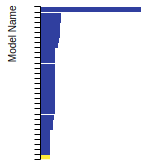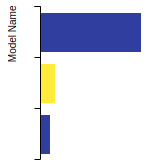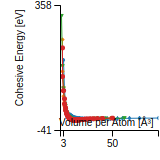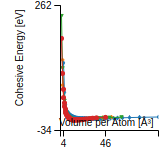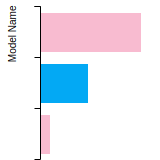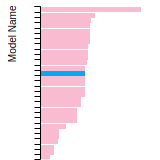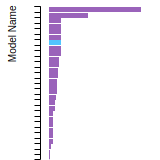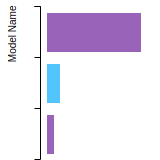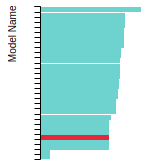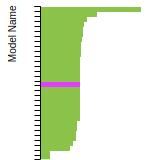 EAM_Dynamo_BonnyBakaevTerentyev_2017_WRe__MO_234187151804_000
EAM_Dynamo_BonnyBakaevTerentyev_2017_WRe__MO_234187151804_000
| Title
A single sentence description.
|
EAM potential (LAMMPS cubic hermite tabulation) for the W-Re system developed by Bonny et al. (2017) v000 |
|---|---|
| Description
A short description of the Model describing its key features including for example: type of model (pair potential, 3-body potential, EAM, etc.), modeled species (Ac, Ag, ..., Zr), intended purpose, origin, and so on.
|
EAM potential for the W-Re system developed by Bonny et al. (2017). In this work we developed an embedded atom method potential for large scale atomistic simulations in the ternary tungsten–hydrogen–helium (W–H–He) system, focusing on applications in the fusion research domain. Following available ab initio data, the potential reproduces key interactions between H, He and point defects in W and utilizes the most recent potential for matrix W. The potential is applied to assess the thermal stability of various H–He complexes of sizes too large for ab initio techniques. The results show that the dissociation of H–He clusters stabilized by vacancies will occur primarily by emission of hydrogen atoms and then by break-up of V–He complexes, indicating that H–He interaction does influence the release of hydrogen. |
| Species
The supported atomic species.
| Re, W |
| Disclaimer
A statement of applicability provided by the contributor, informing users of the intended use of this KIM Item.
|
None |
| Content Origin | NIST IPRP (https://www.ctcms.nist.gov/potentials/W.html#W-Re) |
| Contributor |
Ellad B. Tadmor |
| Maintainer |
Ellad B. Tadmor |
| Developer |
Giovanni Bonny A. Bakaev D. Terentyev Yuri Mastrikov |
| Published on KIM | 2018 |
| How to Cite | Click here to download this citation in BibTeX format. |
| Citations
This panel presents information regarding the papers that have cited the interatomic potential (IP) whose page you are on. The OpenKIM machine learning based Deep Citation framework is used to determine whether the citing article actually used the IP in computations (denoted by "USED") or only provides it as a background citation (denoted by "NOT USED"). For more details on Deep Citation and how to work with this panel, click the documentation link at the top of the panel. The word cloud to the right is generated from the abstracts of IP principle source(s) (given below in "How to Cite") and the citing articles that were determined to have used the IP in order to provide users with a quick sense of the types of physical phenomena to which this IP is applied. The bar chart shows the number of articles that cited the IP per year. Each bar is divided into green (articles that USED the IP) and blue (articles that did NOT USE the IP). Users are encouraged to correct Deep Citation errors in determination by clicking the speech icon next to a citing article and providing updated information. This will be integrated into the next Deep Citation learning cycle, which occurs on a regular basis. OpenKIM acknowledges the support of the Allen Institute for AI through the Semantic Scholar project for providing citation information and full text of articles when available, which are used to train the Deep Citation ML algorithm. |
This panel provides information on past usage of this interatomic potential (IP) powered by the OpenKIM Deep Citation framework. The word cloud indicates typical applications of the potential. The bar chart shows citations per year of this IP (bars are divided into articles that used the IP (green) and those that did not (blue)). The complete list of articles that cited this IP is provided below along with the Deep Citation determination on usage. See the Deep Citation documentation for more information. 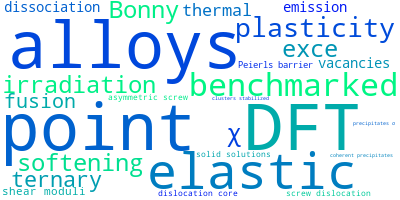
34 Citations (28 used)
Help us to determine which of the papers that cite this potential actually used it to perform calculations. If you know, click the .
USED (high confidence) J. Sublet et al., “Neutron-induced damage simulations: Beyond defect production cross-section, displacement per atom and iron-based metrics,” The European Physical Journal Plus. 2019. link Times cited: 22 USED (low confidence) A. M. Kazakov et al., “Interaction of edge dislocations with voids in tungsten,” Tungsten. 2023. link Times cited: 0 USED (low confidence) M. Hu et al., “Shock response of single crystal rhenium: Effect of crystallographic orientation,” Journal of Materials Research and Technology. 2023. link Times cited: 0 USED (low confidence) T. Karafi, A. Tahiri, M. Idiri, and B. Boubeker, “Effect of concentration of rhenium and temperature on mechanical properties in tungsten-rhenium alloy: A molecular dynamics study,” Materials Today: Proceedings. 2023. link Times cited: 0 USED (low confidence) T.-R. Yang et al., “Influence of rhenium-decorated dislocation loops on edge dislocation gliding in tungsten,” Scripta Materialia. 2023. link Times cited: 0 USED (low confidence) Y. Ma et al., “Unraveling the Atomic Shuffles of Twinning Nucleation in Hexagonal Close-Packed Rhenium Nanocrystals.,” Nano letters. 2023. link Times cited: 0 Abstract: Reining in deformation twinning is crucial for the mechanica… read more USED (low confidence) M. I. Pascuet, J. R. Fernández, N. Castin, and G. Bonny, “The strong hardening effect of Re segregation on edge dislocation lines in W,” Computational Materials Science. 2023. link Times cited: 0 USED (low confidence) T. Karafi, A. Tahiri, H. Chabba, M. Idiri, and B. Boubeker, “Effect of Grain-Size in Nanocrystalline Tungsten on Hardness and Dislocation Density: A Molecular Dynamics Study,” Crystals. 2023. link Times cited: 1 Abstract: We have simulated a series of nanoindentation experiments on… read more USED (low confidence) L. Liu et al., “Displacement cascades database from molecular dynamic simulations in tungsten,” Journal of Nuclear Materials. 2023. link Times cited: 1 USED (low confidence) X.-T. Li, X. Tang, and Y.-F. Guo, “Grain Boundary-Mediated Reduction of Radiation Defects in Different W-Based Alloys,” Metals and Materials International. 2023. link Times cited: 0 USED (low confidence) M. Wu, Y. Zhang, Z. Wang, K. Qiu, Y. Shi, and C. Ge, “Theoretical investigation on yttrium clustering in tungsten grain boundary region and strengthening effect,” Journal of Applied Physics. 2022. link Times cited: 1 Abstract: We have systematically investigated the solution and aggrega… read more USED (low confidence) X. Huang et al., “Effect of Re aggregation doping configurations on the thermal and mechanical properties of W-Re alloys:A molecular dynamics study,” Journal of Nuclear Materials. 2022. link Times cited: 2 USED (low confidence) P. Hiremath, S. Melin, E. Bitzek, and P. Olsson, “Effects of interatomic potential on fracture behaviour in single- and bicrystalline tungsten,” Computational Materials Science. 2022. link Times cited: 14 USED (low confidence) Y. Osetsky, “Strengthening of tungsten by coherent rhenium precipitates formed during low fluence irradiation,” Tungsten. 2021. link Times cited: 2 USED (low confidence) H. Haouas, A. Khmich, A. Samiri, L. E. Atouani, K. Sbiaai, and A. Hasnaoui, “On the structural changes and glass transition temperature relationship during the formation of Re-W metallic glasses,” Journal of Non-crystalline Solids. 2020. link Times cited: 8 USED (low confidence) N. Castin, P. Dwivedi, L. Messina, A. Bakaev, D. Terentyev, and G. Bonny, “The effect of rhenium on the diffusion of small interstitial clusters in tungsten,” Computational Materials Science. 2020. link Times cited: 12 USED (low confidence) Y. Chen, X. Liao, N. Gao, W. Hu, F. Gao, and H. Deng, “Interatomic potentials of W–V and W–Mo binary systems for point defects studies,” Journal of Nuclear Materials. 2020. link Times cited: 13 USED (low confidence) L. Liu et al., “Evaluation of tungsten interatomic potentials for radiation damage simulations,” Tungsten. 2020. link Times cited: 10 USED (low confidence) H. Liu, C. Xu, C. Liu, G. He, T. Yu, and Y. Li, “Probing the indentation induced nanoscale damage of rhenium,” Materials & Design. 2020. link Times cited: 7 USED (low confidence) G. Bonny, A. Bakaev, and D. Terentyev, “Assessment of hardening due to non-coherent precipitates in tungsten-rhenium alloys at the atomic scale,” Scientific Reports. 2019. link Times cited: 7 USED (low confidence) K. Wu, X. Chen, Q. Zhang, D. Li, S. Wang, and X. Fan, “Strengthening effect of rhenium on different substitution positions of tungsten nanofilm at high temperature: DFT and molecular dynamics simulation,” Materials Research Express. 2019. link Times cited: 0 Abstract: Tungsten-rhenium (W-Re) alloys have excellent high-temperatu… read more USED (low confidence) Y. Chen et al., “The interactions between rhenium and interstitial-type defects in bulk tungsten: A combined study by molecular dynamics and molecular statics simulations,” Journal of Nuclear Materials. 2019. link Times cited: 30 USED (low confidence) Y.-H. Li, F.-F. Ma, F. Yue, Q.-Y. Ren, H.-B. Zhou, and G. Lu, “Radiation-induced precipitation of transmutation elements rhenium/osmium and their effects on hydrogen behavior in tungsten,” Progress in Natural Science: Materials International. 2019. link Times cited: 9 USED (low confidence) Y. Chen et al., “New interatomic potentials of W, Re and W-Re alloy for radiation defects,” Journal of Nuclear Materials. 2018. link Times cited: 54 USED (low confidence) N. Castin, G. Bonny, A. Bakaev, C. Ortiz, A. Sand, and D. Terentyev, “Object kinetic Monte Carlo model for neutron and ion irradiation in tungsten: Impact of transmutation and carbon impurities,” Journal of Nuclear Materials. 2018. link Times cited: 38 USED (low confidence) G. Bonny, N. Castin, A. Bakaev, and D. Terentyev, “Kinetic Monte Carlo model for 1-D migration in a field of strong traps: Application to self-interstitial clusters in W-Re alloys,” Computational Materials Science. 2018. link Times cited: 13 USED (low confidence) C.-H. Huang, M. Gilbert, and J. Marian, “Simulating irradiation hardening in tungsten under fast neutron irradiation including Re production by transmutation,” Journal of Nuclear Materials. 2018. link Times cited: 33 USED (low confidence) Y. G. Osetsky and D. Rodney, “Atomic-Level Dislocation Dynamics in Irradiated Metals,” Comprehensive Nuclear Materials. 2020. link Times cited: 8 NOT USED (high confidence) X. Wang, Y. Wang, L. Zhang, F. Dai, and H. Wang, “A tungsten deep neural-network potential for simulating mechanical property degradation under fusion service environment,” Nuclear Fusion. 2021. link Times cited: 14 Abstract: Tungsten is a promising candidate material in fusion energy … read more NOT USED (high confidence) F. Jiang et al., “Thermoelectric properties of p-type polycrystalline Bi0.8Sb0.8In0.4Se3,” Applied Physics Letters. 2021. link Times cited: 3 Abstract: Achieving both n-type and p-type performance in one thermoel… read more NOT USED (high confidence) D. Nguyen-Manh, J. Wróbel, M. Klimenkov, M. J. Lloyd, L. Messina, and S. Dudarev, “First-principles model for voids decorated by transmutation solutes: Short-range order effects and application to neutron irradiated tungsten.” 2021. link Times cited: 11 Abstract: Duc Nguyen-Manh, 2, ∗ Jan S. Wróbel, Michael Klimenkov, Matt… read more NOT USED (high confidence) A. Tahiri, M. Idiri, and B. Boubeker, “Mechanicals Behaviors of Tungsten-Rhenium Alloy Single Crystals from 77K to 300K - Atomic Simulation Study,” International Journal of Engineering Research in Africa. 2020. link Times cited: 0 Abstract: The elastic constants of tungsten-rhenium alloy single cryst… read more |
| Funding | Not available |
| Short KIM ID
The unique KIM identifier code.
| MO_234187151804_000 |
| Extended KIM ID
The long form of the KIM ID including a human readable prefix (100 characters max), two underscores, and the Short KIM ID. Extended KIM IDs can only contain alpha-numeric characters (letters and digits) and underscores and must begin with a letter.
| EAM_Dynamo_BonnyBakaevTerentyev_2017_WRe__MO_234187151804_000 |
| DOI |
10.25950/6b42b97f https://doi.org/10.25950/6b42b97f https://commons.datacite.org/doi.org/10.25950/6b42b97f |
| KIM Item Type
Specifies whether this is a Portable Model (software implementation of an interatomic model); Portable Model with parameter file (parameter file to be read in by a Model Driver); Model Driver (software implementation of an interatomic model that reads in parameters).
| Portable Model using Model Driver EAM_Dynamo__MD_120291908751_005 |
| Driver | EAM_Dynamo__MD_120291908751_005 |
| KIM API Version | 2.0 |
| Potential Type | eam |
| Grade | Name | Category | Brief Description | Full Results | Aux File(s) |
|---|---|---|---|---|---|
| P | vc-species-supported-as-stated | mandatory | The model supports all species it claims to support; see full description. |
Results | Files |
| P | vc-periodicity-support | mandatory | Periodic boundary conditions are handled correctly; see full description. |
Results | Files |
| P | vc-permutation-symmetry | mandatory | Total energy and forces are unchanged when swapping atoms of the same species; see full description. |
Results | Files |
| B | vc-forces-numerical-derivative | consistency | Forces computed by the model agree with numerical derivatives of the energy; see full description. |
Results | Files |
| F | vc-dimer-continuity-c1 | informational | The energy versus separation relation of a pair of atoms is C1 continuous (i.e. the function and its first derivative are continuous); see full description. |
Results | Files |
| P | vc-objectivity | informational | Total energy is unchanged and forces transform correctly under rigid-body translation and rotation; see full description. |
Results | Files |
| P | vc-inversion-symmetry | informational | Total energy is unchanged and forces change sign when inverting a configuration through the origin; see full description. |
Results | Files |
| P | vc-memory-leak | informational | The model code does not have memory leaks (i.e. it releases all allocated memory at the end); see full description. |
Results | Files |
| P | vc-thread-safe | mandatory | The model returns the same energy and forces when computed in serial and when using parallel threads for a set of configurations. Note that this is not a guarantee of thread safety; see full description. |
Results | Files |
| P | vc-unit-conversion | mandatory | The model is able to correctly convert its energy and/or forces to different unit sets; see full description. |
Results | Files |
BCC Lattice Constant
This bar chart plot shows the mono-atomic body-centered cubic (bcc) lattice constant predicted by the current model (shown in the unique color) compared with the predictions for all other models in the OpenKIM Repository that support the species. The vertical bars show the average and standard deviation (one sigma) bounds for all model predictions. Graphs are generated for each species supported by the model.
Cohesive Energy Graph
This graph shows the cohesive energy versus volume-per-atom for the current mode for four mono-atomic cubic phases (body-centered cubic (bcc), face-centered cubic (fcc), simple cubic (sc), and diamond). The curve with the lowest minimum is the ground state of the crystal if stable. (The crystal structure is enforced in these calculations, so the phase may not be stable.) Graphs are generated for each species supported by the model.
Diamond Lattice Constant
This bar chart plot shows the mono-atomic face-centered diamond lattice constant predicted by the current model (shown in the unique color) compared with the predictions for all other models in the OpenKIM Repository that support the species. The vertical bars show the average and standard deviation (one sigma) bounds for all model predictions. Graphs are generated for each species supported by the model.
Dislocation Core Energies
This graph shows the dislocation core energy of a cubic crystal at zero temperature and pressure for a specific set of dislocation core cutoff radii. After obtaining the total energy of the system from conjugate gradient minimizations, non-singular, isotropic and anisotropic elasticity are applied to obtain the dislocation core energy for each of these supercells with different dipole distances. Graphs are generated for each species supported by the model.
FCC Elastic Constants
This bar chart plot shows the mono-atomic face-centered cubic (fcc) elastic constants predicted by the current model (shown in blue) compared with the predictions for all other models in the OpenKIM Repository that support the species. The vertical bars show the average and standard deviation (one sigma) bounds for all model predictions. Graphs are generated for each species supported by the model.
FCC Lattice Constant
This bar chart plot shows the mono-atomic face-centered cubic (fcc) lattice constant predicted by the current model (shown in red) compared with the predictions for all other models in the OpenKIM Repository that support the species. The vertical bars show the average and standard deviation (one sigma) bounds for all model predictions. Graphs are generated for each species supported by the model.
FCC Stacking Fault Energies
This bar chart plot shows the intrinsic and extrinsic stacking fault energies as well as the unstable stacking and unstable twinning energies for face-centered cubic (fcc) predicted by the current model (shown in blue) compared with the predictions for all other models in the OpenKIM Repository that support the species. The vertical bars show the average and standard deviation (one sigma) bounds for all model predictions. Graphs are generated for each species supported by the model.
(No matching species)FCC Surface Energies
This bar chart plot shows the mono-atomic face-centered cubic (fcc) relaxed surface energies predicted by the current model (shown in blue) compared with the predictions for all other models in the OpenKIM Repository that support the species. The vertical bars show the average and standard deviation (one sigma) bounds for all model predictions. Graphs are generated for each species supported by the model.
(No matching species)SC Lattice Constant
This bar chart plot shows the mono-atomic simple cubic (sc) lattice constant predicted by the current model (shown in the unique color) compared with the predictions for all other models in the OpenKIM Repository that support the species. The vertical bars show the average and standard deviation (one sigma) bounds for all model predictions. Graphs are generated for each species supported by the model.
Cubic Crystal Basic Properties Table
Species: ReSpecies: W
Creators:
Contributor: karls
Publication Year: 2019
DOI: https://doi.org/10.25950/64cb38c5
This Test Driver uses LAMMPS to compute the cohesive energy of a given monoatomic cubic lattice (fcc, bcc, sc, or diamond) at a variety of lattice spacings. The lattice spacings range from a_min (=a_min_frac*a_0) to a_max (=a_max_frac*a_0) where a_0, a_min_frac, and a_max_frac are read from stdin (a_0 is typically approximately equal to the equilibrium lattice constant). The precise scaling and number of lattice spacings sampled between a_min and a_0 (a_0 and a_max) is specified by two additional parameters passed from stdin: N_lower and samplespacing_lower (N_upper and samplespacing_upper). Please see README.txt for further details.
| Test | Test Results | Link to Test Results page | Benchmark time
Usertime multiplied by the Whetstone Benchmark. This number can be used (approximately) to compare the performance of different models independently of the architecture on which the test was run.
Measured in Millions of Whetstone Instructions (MWI) |
|---|---|---|---|
| Cohesive energy versus lattice constant curve for bcc Re v004 | view | 7121 | |
| Cohesive energy versus lattice constant curve for bcc W v004 | view | 7469 | |
| Cohesive energy versus lattice constant curve for diamond Re v004 | view | 8319 | |
| Cohesive energy versus lattice constant curve for diamond W v004 | view | 8319 | |
| Cohesive energy versus lattice constant curve for fcc Re v004 | view | 7211 | |
| Cohesive energy versus lattice constant curve for fcc W v004 | view | 8393 | |
| Cohesive energy versus lattice constant curve for sc Re v004 | view | 8466 | |
| Cohesive energy versus lattice constant curve for sc W v004 | view | 7201 |
Creators:
Contributor: qyc081025
Publication Year: 2023
DOI: https://doi.org/10.25950/ebecf626
This Test Driver computes the dislocation core energy of a cubic crystal at zero temperature and pressure for a specific set of dislocation core cutoff radii. First, it generates several periodic atomistic supercells containing a dislocation dipole. After obtaining the total energy of the system from conjugate gradient minimizations, non-singular, isotropic and anisotropic elasticity are applied to obtain the dislocation core energy for each of these supercells with different dipole distances. The supercell is increased in size until the disolcation core energy converges. Finally, after checking the independence of the results from the simulation cell geometry, the dislocation core energies are determined for each dislocation core radius.
Creators:
Contributor: ilia
Publication Year: 2024
DOI: https://doi.org/10.25950/888f9943
Computes the elastic constants for an arbitrary crystal. A robust computational protocol is used, attempting multiple methods and step sizes to achieve an acceptably low error in numerical differentiation and deviation from material symmetry. The crystal structure is specified using the AFLOW prototype designation as part of the Crystal Genome testing framework. In addition, the distance from the obtained elasticity tensor to the nearest isotropic tensor is computed.
| Test | Test Results | Link to Test Results page | Benchmark time
Usertime multiplied by the Whetstone Benchmark. This number can be used (approximately) to compare the performance of different models independently of the architecture on which the test was run.
Measured in Millions of Whetstone Instructions (MWI) |
|---|---|---|---|
| Elastic constants for ReW in AFLOW crystal prototype A2B_hP12_194_ah_f at zero temperature and pressure v000 | view | 138351 |
Creators: Junhao Li and Ellad Tadmor
Contributor: tadmor
Publication Year: 2019
DOI: https://doi.org/10.25950/5853fb8f
Computes the cubic elastic constants for some common crystal types (fcc, bcc, sc, diamond) by calculating the hessian of the energy density with respect to strain. An estimate of the error associated with the numerical differentiation performed is reported.
| Test | Test Results | Link to Test Results page | Benchmark time
Usertime multiplied by the Whetstone Benchmark. This number can be used (approximately) to compare the performance of different models independently of the architecture on which the test was run.
Measured in Millions of Whetstone Instructions (MWI) |
|---|---|---|---|
| Elastic constants for bcc Re at zero temperature v006 | view | 2143 | |
| Elastic constants for bcc W at zero temperature v006 | view | 4287 | |
| Elastic constants for diamond W at zero temperature v001 | view | 3647 | |
| Elastic constants for fcc Re at zero temperature v006 | view | 2207 | |
| Elastic constants for fcc W at zero temperature v006 | view | 1759 | |
| Elastic constants for sc Re at zero temperature v006 | view | 1791 | |
| Elastic constants for sc W at zero temperature v006 | view | 1567 |
Creators: Junhao Li
Contributor: jl2922
Publication Year: 2018
DOI: https://doi.org/10.25950/2e4b93d9
Computes the elastic constants for hcp crystals by calculating the hessian of the energy density with respect to strain. An estimate of the error associated with the numerical differentiation performed is reported.
| Test | Test Results | Link to Test Results page | Benchmark time
Usertime multiplied by the Whetstone Benchmark. This number can be used (approximately) to compare the performance of different models independently of the architecture on which the test was run.
Measured in Millions of Whetstone Instructions (MWI) |
|---|---|---|---|
| Elastic constants for hcp Re at zero temperature | view | 2932 | |
| Elastic constants for hcp W at zero temperature | view | 3445 |
Creators:
Contributor: ilia
Publication Year: 2024
DOI: https://doi.org/10.25950/2f2c4ad3
Computes the equilibrium crystal structure and energy for an arbitrary crystal at zero temperature and applied stress by performing symmetry-constrained relaxation. The crystal structure is specified using the AFLOW prototype designation. Multiple sets of free parameters corresponding to the crystal prototype may be specified as initial guesses for structure optimization. No guarantee is made regarding the stability of computed equilibria, nor that any are the ground state.
| Test | Test Results | Link to Test Results page | Benchmark time
Usertime multiplied by the Whetstone Benchmark. This number can be used (approximately) to compare the performance of different models independently of the architecture on which the test was run.
Measured in Millions of Whetstone Instructions (MWI) |
|---|---|---|---|
| Equilibrium crystal structure and energy for ReW in AFLOW crystal prototype A2B_hP12_194_ah_f v002 | view | 55838 |
Creators:
Contributor: ilia
Publication Year: 2025
DOI: https://doi.org/10.25950/866c7cfa
Computes the equilibrium crystal structure and energy for an arbitrary crystal at zero temperature and applied stress by performing symmetry-constrained relaxation. The crystal structure is specified using the AFLOW prototype designation. Multiple sets of free parameters corresponding to the crystal prototype may be specified as initial guesses for structure optimization. No guarantee is made regarding the stability of computed equilibria, nor that any are the ground state.
| Test | Test Results | Link to Test Results page | Benchmark time
Usertime multiplied by the Whetstone Benchmark. This number can be used (approximately) to compare the performance of different models independently of the architecture on which the test was run.
Measured in Millions of Whetstone Instructions (MWI) |
|---|---|---|---|
| Equilibrium crystal structure and energy for Re in AFLOW crystal prototype A_cF4_225_a v003 | view | 179998 | |
| Equilibrium crystal structure and energy for W in AFLOW crystal prototype A_cF4_225_a v003 | view | 190407 | |
| Equilibrium crystal structure and energy for W in AFLOW crystal prototype A_cI2_229_a v003 | view | 140416 | |
| Equilibrium crystal structure and energy for W in AFLOW crystal prototype A_cP8_223_ac v003 | view | 176690 | |
| Equilibrium crystal structure and energy for Re in AFLOW crystal prototype A_hP2_194_c v003 | view | 159556 |
Creators: Daniel S. Karls and Junhao Li
Contributor: karls
Publication Year: 2019
DOI: https://doi.org/10.25950/2765e3bf
Equilibrium lattice constant and cohesive energy of a cubic lattice at zero temperature and pressure.
| Test | Test Results | Link to Test Results page | Benchmark time
Usertime multiplied by the Whetstone Benchmark. This number can be used (approximately) to compare the performance of different models independently of the architecture on which the test was run.
Measured in Millions of Whetstone Instructions (MWI) |
|---|---|---|---|
| Equilibrium zero-temperature lattice constant for bcc Re v007 | view | 2303 | |
| Equilibrium zero-temperature lattice constant for bcc W v007 | view | 2207 | |
| Equilibrium zero-temperature lattice constant for diamond Re v007 | view | 3263 | |
| Equilibrium zero-temperature lattice constant for diamond W v007 | view | 3679 | |
| Equilibrium zero-temperature lattice constant for fcc Re v007 | view | 2463 | |
| Equilibrium zero-temperature lattice constant for fcc W v007 | view | 2559 | |
| Equilibrium zero-temperature lattice constant for sc Re v007 | view | 2495 | |
| Equilibrium zero-temperature lattice constant for sc W v007 | view | 2207 |
Creators: Daniel S. Karls and Junhao Li
Contributor: karls
Publication Year: 2019
DOI: https://doi.org/10.25950/c339ca32
Calculates lattice constant of hexagonal bulk structures at zero temperature and pressure by using simplex minimization to minimize the potential energy.
| Test | Test Results | Link to Test Results page | Benchmark time
Usertime multiplied by the Whetstone Benchmark. This number can be used (approximately) to compare the performance of different models independently of the architecture on which the test was run.
Measured in Millions of Whetstone Instructions (MWI) |
|---|---|---|---|
| Equilibrium lattice constants for hcp Re v005 | view | 37945 | |
| Equilibrium lattice constants for hcp W v005 | view | 38520 |
Creators:
Contributor: mjwen
Publication Year: 2024
DOI: https://doi.org/10.25950/9d9822ec
This Test Driver uses LAMMPS to compute the linear thermal expansion coefficient at a finite temperature under a given pressure for a cubic lattice (fcc, bcc, sc, diamond) of a single given species.
| Test | Test Results | Link to Test Results page | Benchmark time
Usertime multiplied by the Whetstone Benchmark. This number can be used (approximately) to compare the performance of different models independently of the architecture on which the test was run.
Measured in Millions of Whetstone Instructions (MWI) |
|---|---|---|---|
| Linear thermal expansion coefficient of bcc W at 293.15 K under a pressure of 0 MPa v002 | view | 532129 |
Creators: Matt Bierbaum
Contributor: mattbierbaum
Publication Year: 2019
DOI: https://doi.org/10.25950/6c43a4e6
Calculates the surface energy of several high symmetry surfaces and produces a broken-bond model fit. In latex form, the fit equations are given by:
E_{FCC} (\vec{n}) = p_1 (4 \left( |x+y| + |x-y| + |x+z| + |x-z| + |z+y| +|z-y|\right)) + p_2 (8 \left( |x| + |y| + |z|\right)) + p_3 (2 ( |x+ 2y + z| + |x+2y-z| + |x-2y + z| + |x-2y-z| + |2x+y+z| + |2x+y-z| +|2x-y+z| +|2x-y-z| +|x+y+2z| +|x+y-2z| +|x-y+2z| +|x-y-2z| ) + c
E_{BCC} (\vec{n}) = p_1 (6 \left( | x+y+z| + |x+y-z| + |-x+y-z| + |x-y+z| \right)) + p_2 (8 \left( |x| + |y| + |z|\right)) + p_3 (4 \left( |x+y| + |x-y| + |x+z| + |x-z| + |z+y| +|z-y|\right)) +c.
In Python, these two fits take the following form:
def BrokenBondFCC(params, index):
import numpy
x, y, z = index
x = x / numpy.sqrt(x**2.+y**2.+z**2.)
y = y / numpy.sqrt(x**2.+y**2.+z**2.)
z = z / numpy.sqrt(x**2.+y**2.+z**2.)
return params[0]*4* (abs(x+y) + abs(x-y) + abs(x+z) + abs(x-z) + abs(z+y) + abs(z-y)) + params[1]*8*(abs(x) + abs(y) + abs(z)) + params[2]*(abs(x+2*y+z) + abs(x+2*y-z) +abs(x-2*y+z) +abs(x-2*y-z) + abs(2*x+y+z) +abs(2*x+y-z) +abs(2*x-y+z) +abs(2*x-y-z) + abs(x+y+2*z) +abs(x+y-2*z) +abs(x-y+2*z) +abs(x-y-2*z))+params[3]
def BrokenBondBCC(params, x, y, z):
import numpy
x, y, z = index
x = x / numpy.sqrt(x**2.+y**2.+z**2.)
y = y / numpy.sqrt(x**2.+y**2.+z**2.)
z = z / numpy.sqrt(x**2.+y**2.+z**2.)
return params[0]*6*(abs(x+y+z) + abs(x-y-z) + abs(x-y+z) + abs(x+y-z)) + params[1]*8*(abs(x) + abs(y) + abs(z)) + params[2]*4* (abs(x+y) + abs(x-y) + abs(x+z) + abs(x-z) + abs(z+y) + abs(z-y)) + params[3]
| Test | Test Results | Link to Test Results page | Benchmark time
Usertime multiplied by the Whetstone Benchmark. This number can be used (approximately) to compare the performance of different models independently of the architecture on which the test was run.
Measured in Millions of Whetstone Instructions (MWI) |
|---|---|---|---|
| Broken-bond fit of high-symmetry surface energies in bcc W v004 | view | 15995 |
Creators:
Contributor: efuem
Publication Year: 2023
DOI: https://doi.org/10.25950/fca89cea
Computes the monovacancy formation energy and relaxation volume for cubic and hcp monoatomic crystals.
| Test | Test Results | Link to Test Results page | Benchmark time
Usertime multiplied by the Whetstone Benchmark. This number can be used (approximately) to compare the performance of different models independently of the architecture on which the test was run.
Measured in Millions of Whetstone Instructions (MWI) |
|---|---|---|---|
| Monovacancy formation energy and relaxation volume for bcc W | view | 248837 | |
| Monovacancy formation energy and relaxation volume for hcp Re | view | 336372 |
Creators:
Contributor: efuem
Publication Year: 2023
DOI: https://doi.org/10.25950/c27ba3cd
Computes the monovacancy formation and migration energies for cubic and hcp monoatomic crystals.
| Test | Test Results | Link to Test Results page | Benchmark time
Usertime multiplied by the Whetstone Benchmark. This number can be used (approximately) to compare the performance of different models independently of the architecture on which the test was run.
Measured in Millions of Whetstone Instructions (MWI) |
|---|---|---|---|
| Vacancy formation and migration energy for bcc W | view | 4535391 | |
| Vacancy formation and migration energy for hcp Re | view | 3726449 |
ElasticConstantsCubic__TD_011862047401_006
| Test | Error Categories | Link to Error page |
|---|---|---|
| Elastic constants for diamond Re at zero temperature v001 | other | view |
ElasticConstantsHexagonal__TD_612503193866_004
| Test | Error Categories | Link to Error page |
|---|---|---|
| Elastic constants for hcp Re at zero temperature v004 | other | view |
| Elastic constants for hcp W at zero temperature v004 | other | view |
| EAM_Dynamo_BonnyBakaevTerentyev_2017_WRe__MO_234187151804_000.txz | Tar+XZ | Linux and OS X archive |
| EAM_Dynamo_BonnyBakaevTerentyev_2017_WRe__MO_234187151804_000.zip | Zip | Windows archive |
This Model requires a Model Driver. Archives for the Model Driver EAM_Dynamo__MD_120291908751_005 appear below.
| EAM_Dynamo__MD_120291908751_005.txz | Tar+XZ | Linux and OS X archive |
| EAM_Dynamo__MD_120291908751_005.zip | Zip | Windows archive |
